After Xi’an and Harbin, it was finally time for us to leave China! After spending the past 5 months in the same country, we’d forgotten how disorienting it is to deal with new language, currency, and cultural norms. We were a little embarrassed to not even be able to say “hello,” “sorry,” or “thank you.” Still, we were excited to dig into the new culture and explore as much as we could in our limited time. While the city of Seoul was amazing, the highlight for us was definitely our day trip to the Joint Security Area (JSA). This is part of the Demilitarized Zone (DMZ) which separates North and South Korea. We learned so much about the politics between North and South, and came away feeling like we had just visited a part of current history – who knows how long the JSA and DMZ will be present, and what the future holds for the formerly unified country? Keep reading to hear more about this eye-opening experience, and to find out what else we did in Seoul!
[toc]
Day Tour to the North-South Korean Border
I admit that I didn’t know very much about the Koreas until we took this tour. So first, a very brief recent history for those like me who’ve forgotten that day in high school history class!
Ok, now we’re all caught up on the basics – on to the tour! The first stop was Mt. Odu Unification Observatory. There was a viewing deck where you could look over at North Korea, a communal art display made by South Koreans who still have family in North Korea, and an information section which detailed many small and large conflicts between the two countries over the years. We also watched the video “Today, Tomorrow and the Reunification of the Korean Peninsula,” which discussed the progression of the three Kims and the differences in their reigns. After the video, a North Korean defector gave a brief presentation and we were able to ask her many questions.
Watching the video and listening to the defector, it was pretty horrifying to think of all the atrocities that the Northern regime has committed against their citizens. It made you question at what point other governments decide to step in to stop mistreatment of human beings, what factors limit this, and what suffering goes on around the world that we in privileged nations rarely hear or think about.
The Life of a North Korean Defector
It was incredibly powerful to hear the defector’s story (name and photos omitted for her privacy). She was a middle-aged woman who had lived in a Northern town near the Chinese border with her husband, who worked for the government, and their daughter. Their standard of living under the first Premier, Kim Il-sung, was acceptable and she didn’t question the government. But when Kim Jung-il took over, he began investing huge amounts of the people’s money in nuclear power, and her family began to struggle to get by. Wanting a good education for her daughter, she contacted her uncle who lived in China and began to plan their escape. She tried to casually ask her husband what he thought of other countries, but even simple conversation like this was unacceptable under the regime and her husband threatened to report her to the government if she brought it up again. She realized that to leave North Korea, she and her daughter must do so without arousing her husband’s suspicion.
In 2011, her and her daughter were indeed able to escape. Her uncle bribed a border guard, and from there they stayed in her uncle’s house for 3 months. They could not leave the house even once, because Chinese police check IDs regularly and would return them to North Korea if they were found out. Finally they found a smuggler who would take them across Laos into Thailand, a country sympathetic to North Korean defectors. She still has nightmares about when they crossed the Mekong River at night, because she had heard stories about alligator attacks. They stayed in Thailand for several more months before being able to travel to South Korea.
Once in South Korea, she and her daughter were able to begin the process of becoming South Korean citizens. The process was successful, and while she is grateful to South Korea she still misses her home and her husband. She has heard through others that her husband was interrogated for their disappearance, lost his government job, and must now work in the countryside.
Imjingak Park
After Mt. Udo Unification Observatory, the tour continued to Imjingak Park. Here we saw the Freedom Bridge, which enabled thousands of POWs to return at the end of the Korean War, and an old bullet-ridden train that used to cross the border but was abandoned when the area became too dangerous. The fences were covered with ribbons tied there by South Koreans who hope for reunification.
Throughout the entire tour, we were surprised to find out that the overwhelming majority of South Koreans truly hope for reunification and are willing to “forgive and forget”, so to speak, the many crimes of the North. Even when soldiers from the North defect, the government often pardons them and allows them to integrate into society. The North Korean government strictly restricts all outside media and information. They tell their citizens that they are fighting to liberate South Korea from America, who is the number one enemy! Because of this strict indoctrination, the South is willing to accept even defectors previously involved in the military or government because they realize that they simply did not know the truth. South Korea misses their families in the North, aches for the pain of those under an unjust government, and are desperately seeking to reunify the country.
Joint Security Area in the Demilitarized Zone
After a busy morning and lunch break, we finally arrived at the JSA. This area is protected by UN soldiers and is used for meetings between country leaders. Here we had a security briefing and signed a waiver that stated we were now officially UN guests and were no way under the protection of South Korea. We drove through the demilitarized zone (no pictures allowed!), passing by the 2 villages – 1 North, 1 South – that were allowed to remain when the DMZ was established. The two villages had a bit of a flagpole war, so the northern village actually has the third-largest flagpole in the world as a result.
Then, the main attraction – the blue buildings! Half of each building is in South Korea, and the other half is in North Korea. We were escorted inside, and they explained that the microphones on the table (which are monitored 24/7) mark the border inside while the raised concrete line marks the border outside. South Korean soldiers stood at one end of the table, at the door to North Korea, and at the door to South Korea. We were granted a few minutes to walk past the table so that we were “in North Korea” and take some photos with the soldiers. Weirdly enough, you could only take photos facing North Korea, but both sides looked the same.
We did not see any North Korean soldiers, because apparently they don’t come outside very often. North Korea does grant tours – mainly to Chinese and Russian tourists – so that is when they come out most often. Unfortunately these are all the photos we have, as they had pretty strict rules about where you could take photos and how long you could be in each place. Overall, it was an incredible tour and really opened our eyes to something that will one day be in history books! We’ve definitely been trying to keep up on the news a bit more after this day trip.
Seeing Seoul
Our trip to the JSA and DMZ took up most of our time in Seoul, but we did get to see a bit of the city! We visited Gyeongbokgung Palace, got a bunch of free face masks at Myeongdong (cosmetics district – Korea is known for its obsession with beauty), strolled down Insadong shopping street, and tried a lot of delicious new foods as well as the famous soju. Tommy was hyped to find Oreo cereal, a childhood favorite that has been discontinued in America.
If you’re still reading, congratulations for making it through what I’m sure is one of my longest ever posts! Despite only being in South Korea only a few days, we learned and saw so much. We’re eager to see what the future holds for this kind and beautiful country.
Up next week on the blog – taking on Tokyo! Until then, lots of love! 💕

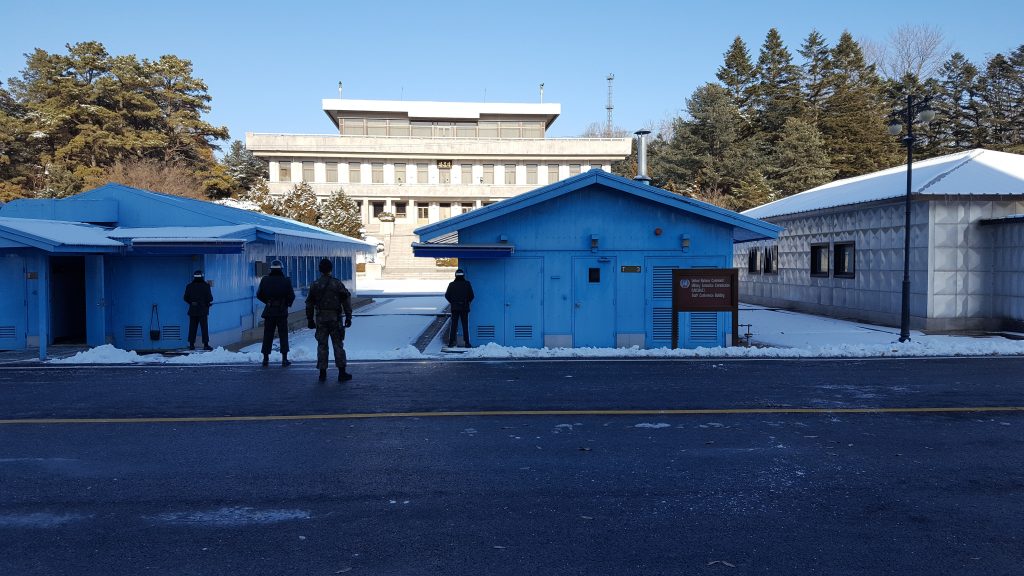
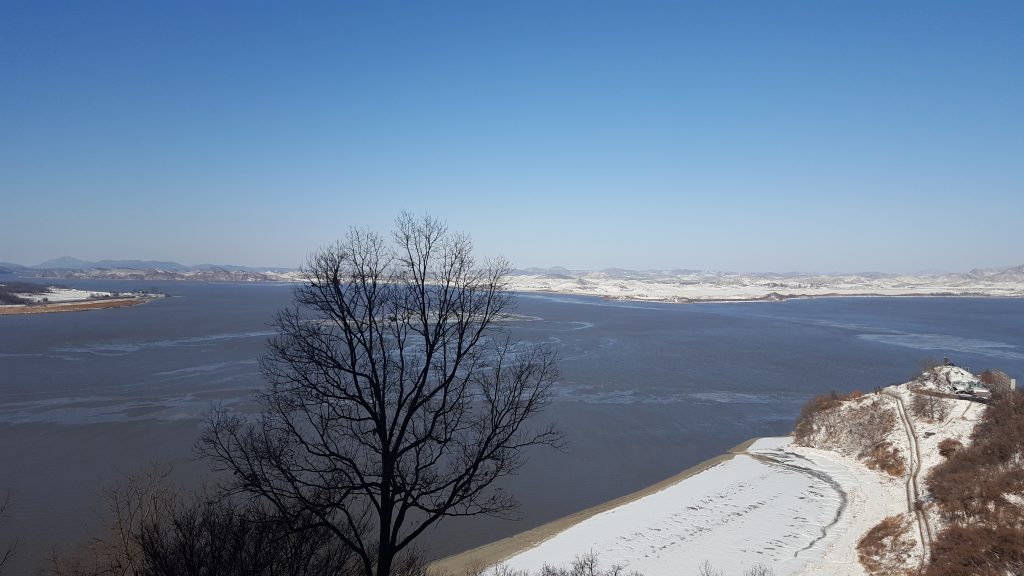


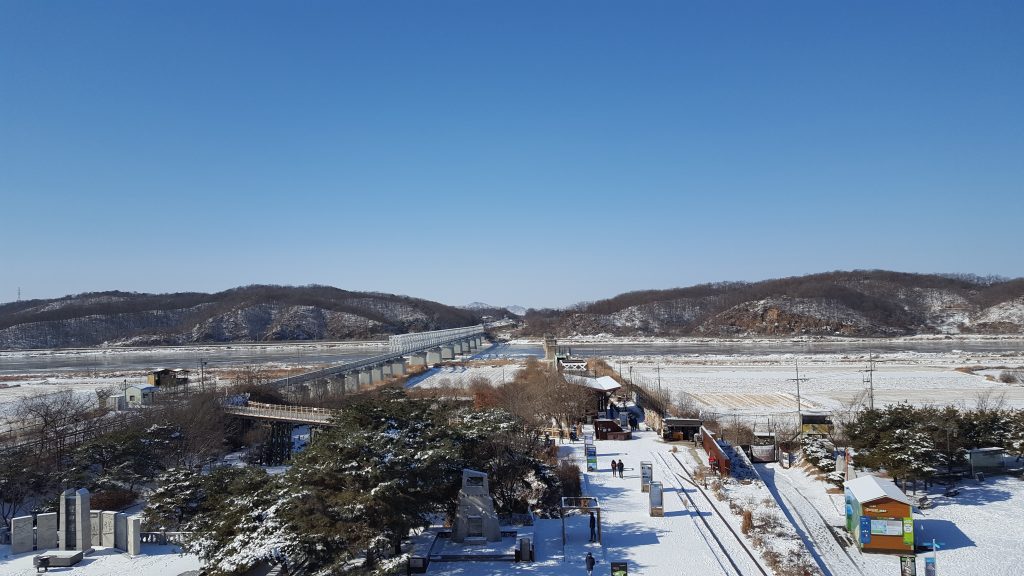

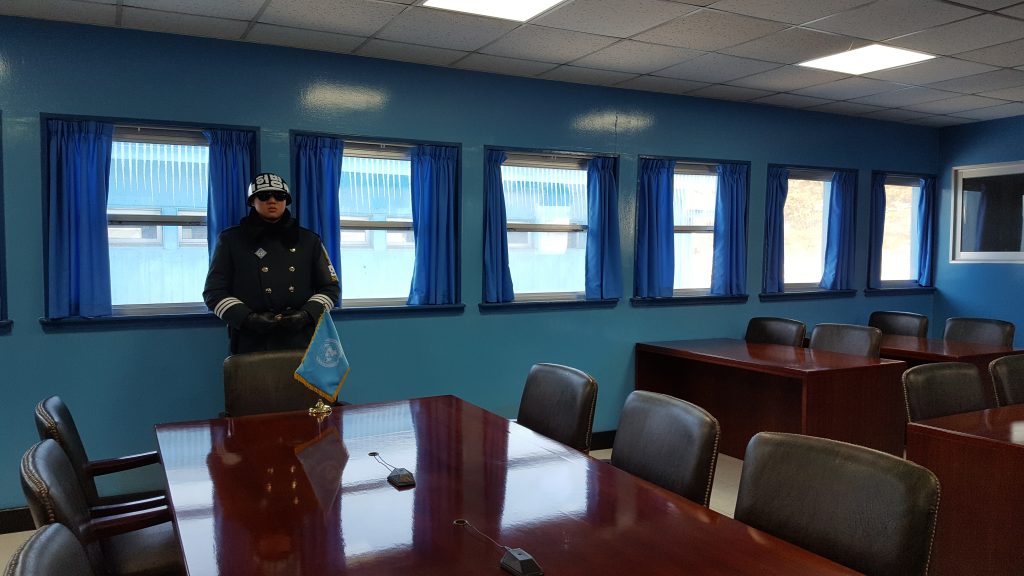
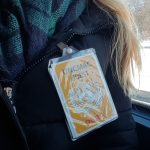

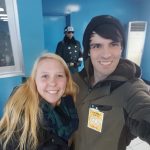
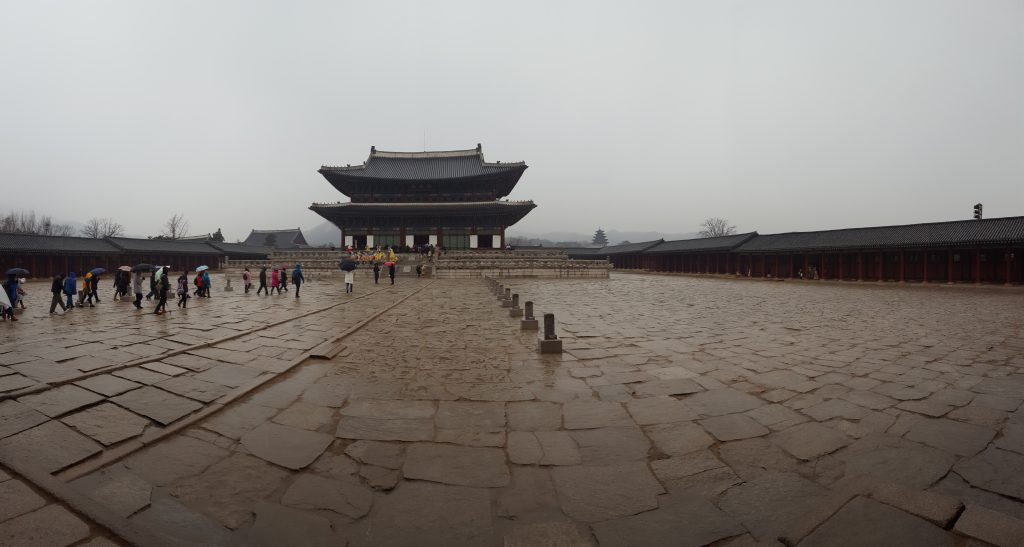
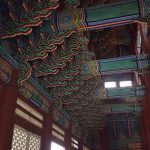

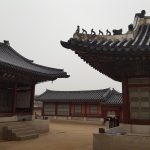
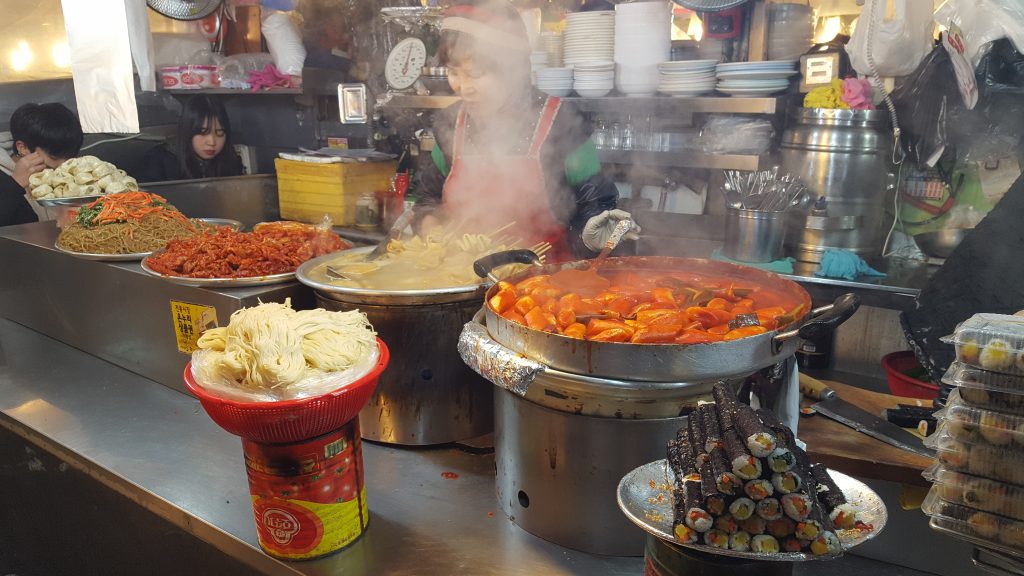
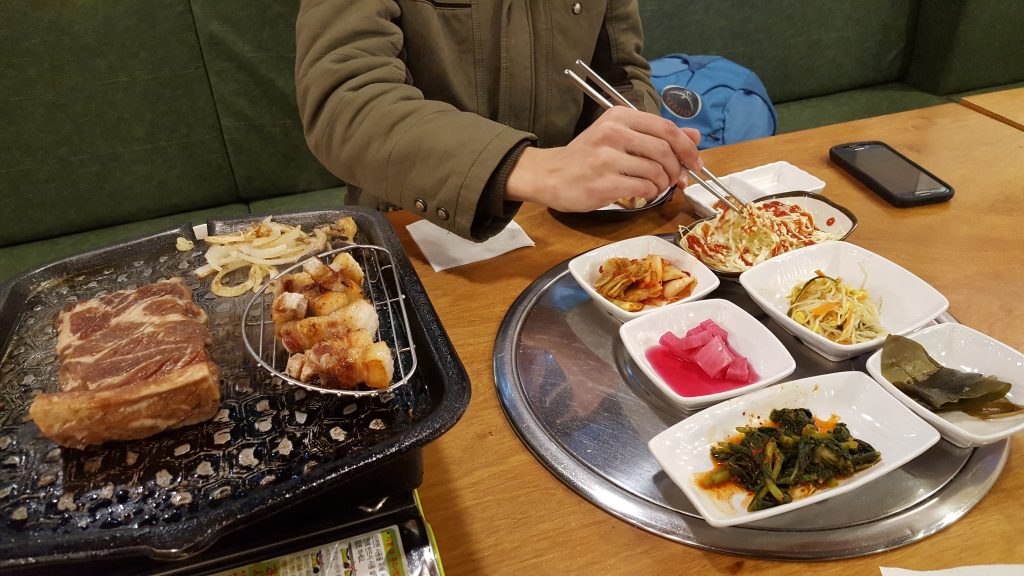



Glad you were able to see this..most Americans don’t remember their history..I was just a little kid when that war was going on. But it was a big deal..so many lives lost and permanently changed. Why do they have Oreo cereal there and not here? Last week’s ice castles were gorgeous …didn’t have time to respond..Isaac and Bailey are going to be here this afternoon for a homecooked meal and to celebrate his 22nd birthday. Glad you are so adventurous about trying new foods. I’m not but Grampa is and he can use chopsticks while I would have to bring along my fork and spoon! How is school going? Are you learning as much Chinese as they are learning English? Love you both! Gand G